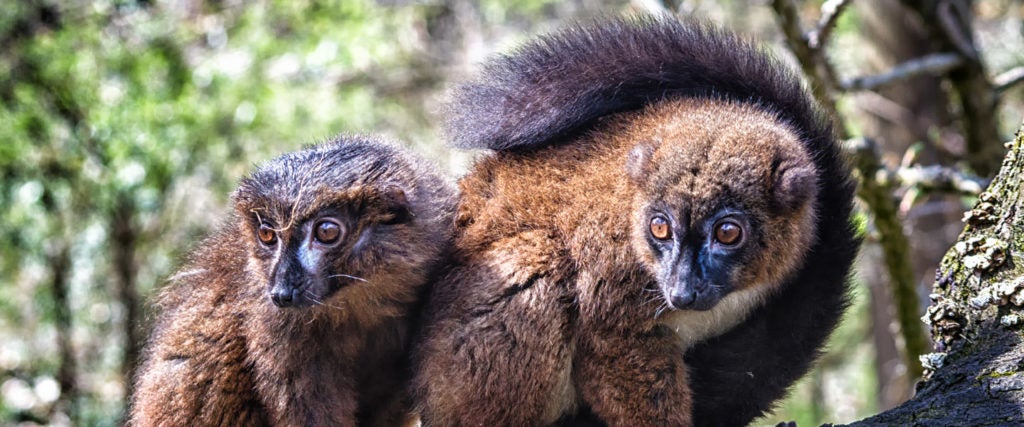Much of the natural world is a free-loving fuckfest. No lifelong partners, no labels, no rules. Humans, on the other hand, broadly prescribe to the norm of perpetual monogamy. While both the animal and plant kingdoms writ large might make us the minority in that respect, we’re not totally alone: We’ve got lemurs on monogamy’s side.
We’d already understood that wolves, foxes, bats, beavers and 90 percent of the bird world tend to stick to one partner during their lifespan, but new research on red-bellied and mongoose lemurs gives us new insight into the brain circuitry behind these lasting relationships. Like humans, some species of lemurs are monogamous while others are not. Given that lemurs in the wild are native exclusively to the island of Madagascar, this variance across such a closely-connected animal group is somewhat surprising. As distant relatives to humans, though, the love lives of lemurs may offer some greater insights about ourselves.
Among the monogamous lemurs, male and female lemurs who become a bonded pair spend most of their days literally wrapped in each other’s tails, often grooming their partner and cuddling. Previous studies in rodents that mate for life have found that their brains had more locations for oxytocin and vasopressin (two hormones released during mating and cuddling) than their polyamorous rodent counterparts. Given that all red-bellied and mongoose lemurs seem to do is cuddle each other, researchers at the Duke University Lemur Center wanted to see if the same was true for them.
In scanning the brains of 12 lemurs who died of natural causes at the Lemur Center (RIP), researchers were attempting to see if the pathways for oxytocin in these lemurs were similar to those of monogamous rodents. As it turns out, though, they weren’t.
So where does that leave us monogamous humans and lemurs?
According to the researchers, we’re still not totally sure. If anything, though, it might be evidence that our inclination toward monogamy (and even our inclination toward polyamory, for some) is at least a bit more complicated than that of a rodent. “It may be the combined actions and interactions of multiple brain chemicals, along with ecological factors, that create long-lasting bonds in lemurs and other primates, including humans,” a press release from Duke University states.
Maybe these lemurs, like many humans, mate for life for a plethora of reasons, none of which need to be filed down to a perfect scientific explanation. Maybe lemurs, too, experience the mysteries of love.

